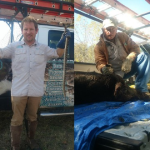Found throughout North America, American crows are famous for their distinctive, ear-piercing call—“caw, caw!” Highly intelligent, crows have adapted well to human environments. They can build nests in a variety of gaps and holes in structures—especially in attics. In the process of building their nests, crows can block vents and contaminate water tanks. Apart from the contamination that crows cause, many homeowners also complain of the loud ruckus they make, while others have experienced crows pecking at windows or smearing droppings on the sides of walls.
They've been intertwined with human civilization for as long as we've been around, and often seen as an omen or an emblem of mystery. They're the mischievous neighbors we didn't know we had — the crows. Smart, resourceful, and sometimes a bit too cheeky, crows are an intriguing part of the urban and rural landscapes.
Appearance
General Characteristics
Crows belong to the Corvidae family, which also includes ravens, magpies, and jays. They have a strong build, with robust beaks and a generally black plumage that gives them a sleek, almost aristocratic look.
Coloration/Patterns/Distinctive Markings
Crows are predominantly black, from their beaks to their talons. This glossy black color can sometimes show iridescent hues of purple or blue, especially under direct sunlight. Unlike their raven counterparts, crows don't have any ruff of feathers on their throats.
Size/Features
Adult crows typically measure about 17 to 21 inches in length. They have a wingspan ranging from 33 to 39 inches. Their sturdy beaks and powerful legs are also entirely black, making it easier to distinguish them from other birds.
Biology
Digestion and Diet
Crows are omnivores. Their varied diet can consist of insects, fruits, small mammals, eggs, and even garbage or carrion. Their adaptability in terms of diet is one reason they thrive in varied habitats, including urban areas.
Reproduction
A mating pair of crows will typically stay together for life. They often nest in tall trees and can have a clutch size ranging from 3 to 9 eggs. Both parents play a role in raising the young, with fledglings staying with the parents for up to two months after hatching.
Unique Sensory Systems
Crows possess a high level of intelligence and are known for their problem-solving capabilities. Their vision is particularly sharp, aiding them in spotting food from high altitudes. They also have a keen sense of hearing which they use to detect predators or prey.
Habitat
Preferred Environments
While crows are commonly found in wooded areas, they're highly adaptable and can thrive in urban landscapes, agricultural areas, and suburbs.
Urban Encounters
It's not unusual to spot crows in city parks, on streets, or perched on buildings. Their adaptability allows them to make use of resources in urban environments, and they aren't easily deterred by human activity.
Temperature Regulation
Crows are hearty birds and can withstand varied climates. Their dense plumage offers protection against cold temperatures, and they're known to sunbathe to regulate their body temperature during warmer periods.
Behavior
Defensive Mechanisms
When threatened, crows are known to mob together and chase away potential predators like hawks or owls. Their loud and raucous calls can serve as a warning signal to other crows in the area.
Hunting Techniques
Crows often forage on the ground, flipping over leaves or debris to find insects. They've also been observed using tools, such as twigs, to extract insects from tree bark.
Migratory Patterns
While some crows migrate in search of food, others are residents, staying in one area year-round. Migration patterns can vary based on the specific species and the region.
Damage/Problems
Diseases
Crows can be carriers of West Nile virus and can sometimes be a key indicator of the disease's presence in an area.
Burrowing
Unlike some birds, crows don't typically burrow or dig extensively. However, their foraging behavior can sometimes disrupt gardens or landscaped areas.
Structural Damage
While not frequent, crows have been known to peck at roof materials, window seals, or other structures, especially if they find food sources in them.
Trapping & Removal
Safe Handling
Due to their intelligence and agility, trapping crows requires skill and experience. It's essential to approach them in a manner that doesn't stress or harm the bird.
Relocation
Once captured, crows should be relocated to areas away from human habitats where they can continue their natural behaviors without causing disturbances.
Deterrence
Property Maintenance
Keeping garbage sealed and inaccessible, cleaning up any potential food sources, and ensuring that gardens and compost heaps are secure can deter crows from settling in an area.
Physical Barriers
Bird spikes, netting, or reflective objects can be effective in deterring crows from roosting or settling in specific areas.
Exclusion
Regularly inspecting properties for nests and using audio repellents can help keep these clever birds at bay.
No matter how intrigued or troubled you are by these feathery neighbors, if you need help with any crow-related issues, AAAC Wildlife Removal services are your go-to experts. With a team of experienced professionals, we can ensure that your crow concerns are addressed with efficiency and care.


















































